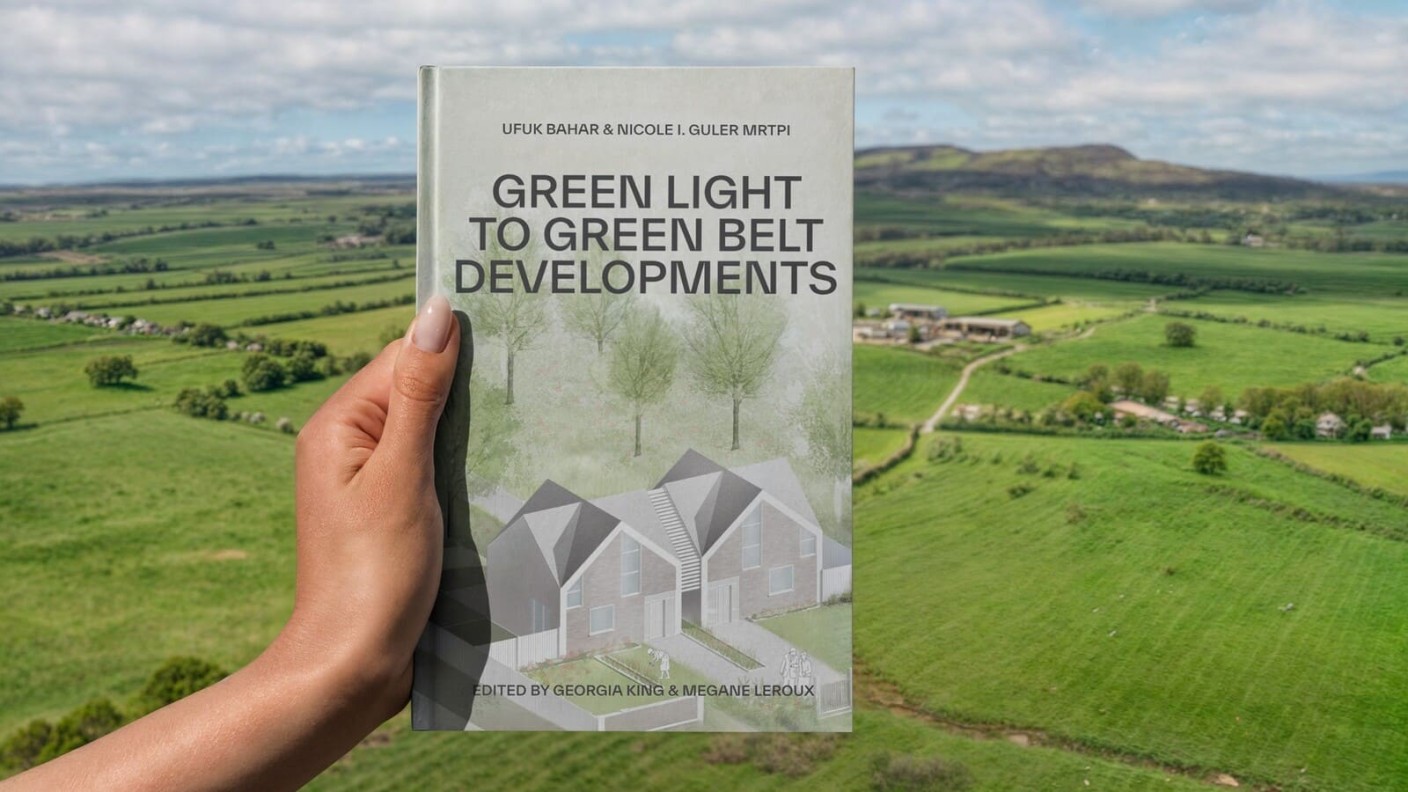Urbanist Architecture scrutinises Labour’s planning reforms in new book, ‘Green Light to Green Belt Developments’
Labour’s planning system reforms won’t be enough to solve the housing crisis, says Urbanist Architecture in its new book, ‘Green Light for Green Belt Developments’.
A few days after the announcement of the return of mandatory local housing targets, Ufuk Bahar, managing director at Urbanist Architecture says, “Increasing the annual national target to 370,000 indicates how committed this government is to changing the housing landscape and that is to be admired. However, the practicalities of achieving the new target remains a mystery. The last time England built more than 300,000 new homes in a year was in 1969.”
He continues, “With a skills shortage of more than 150,000 construction workers, I am sceptical of how these lofty goals will be reached. Labour has plans in place with the creation of Skills England and the adjustment of the apprenticeship levy, but I worry these efforts won’t go nearly far enough to create the output that is required.”
Commenting on the government’s housing land supply adjustments in the draft NPPF consultation, Mr Bahar adds, “Authorities with up-to-date plans no longer need to demonstrate a five-year housing land supply, and those with local plans in early draft or publication stages only need to show a four-year supply. Although the presumption in favour of sustainable development remains, the relaxed housing land supply requirements may reduce local authorities’ incentives to approve new developments. These proposed updates to the NPPF will likely fall short of supporting the government’s goal of significantly boosting housing delivery.”
Commenting on the government’s official definition of ‘grey belt’ in the draft NPPF consultation, Mr Bahar noted, “While it is great to finally have the term ‘grey belt’ defined, I believe further refinement could have saved a lot of time and confusion.
“The definition rather broadly describes ‘grey belt’ as previously developed land and/or areas of Green Belt land that make a limited contribution to the Green Belt’s five purposes. It relies on subjective assessments of what constitutes ‘limited contribution’ to the Green Belt’s goals, which is likely to cause an uneven distribution of ‘grey belt’ sites and exacerbate regional disparities in housing availability. This could also encourage some local authorities to avoid comprehensive Green Belt boundary reviews.”
Mr Bahar continued, “The revised NPPF does not mandate Green Belt reviews but allows local authorities to alter Green Belt boundaries under exceptional circumstances, such as unmet housing or commercial needs. This change is optional, not mandatory, potentially leaving many areas with significant Green Belt coverage facing challenges in meeting housing demands. This could hinder overall housing supply goals if local authorities do not proactively choose to review Green Belt boundaries. If we are to truly deliver the homes we need, a strategic, nationwide review of Green Belt land should be considered to identify areas where the land plays a minimal role in controlling urban sprawl but can significantly enhance housing supply.
“The Green Belt has been obstructing the resolution of the housing crisis for too long. England’s erroneous understanding of the Green Belt being for environmental protection rather than reducing urban sprawl has held the country back from building the homes it desperately needs. While it’s positive that some reform is going ahead, I am ultimately disappointed that greater change wasn’t seen in the NPPF.”
These ideas are echoed in Urbanist Architecture’s new book, ‘Green Light to Green Belt Developments’, co-authored by Ufuk Bahar alongside chartered town planner Nicole Guler.
It reads, “Although it is commendable that Labour understands the Green Belt can no longer be used as an excuse not to deliver homes, the success of their housebuilding promises hinges on overcoming the bureaucratic and legal obstacles that have historically hampered housing projects.”
The book continues, “The challenge extends beyond merely constructing more homes; it involves ensuring the entire system, from planning to execution, can support this scale of development. For Labour’s housing strategy to succeed, it must address these economic realities and provide a stable, supportive framework that encourages both public and private sector participation. Only then can Labour’s ambitious housing goals become a reality and foster resilient communities for future generations.”
As well as an expert analysis of Labour’s homebuilding plans, ‘Green Light to Green Belt Developments’ examines the history of this long-standing policy and explains why it has persisted in its original form when so many other policies have been either abandoned or modernised. It also explores who the policy benefits and who it lets down and combs through circumstances when building on the belt can be possible.
Green Light to Green Belt Developments is available exclusively online for £29.97.
~ ENDS ~
About Ufuk Bahar, Managing Director at Urbanist Architecture
Ufuk Bahar is a highly sought-after expert in the residential space, renowned for his ability to secure planning permissions under the most rigorous circumstances, including Green Belt projects.
Contact information
Georgia King: georgia@urbanistarchitecture.co.uk or 020 3793 7878
Urbanist Architecture, 2 Little Thames Walk. Greenwich SE8 3FB.





